Categories
Left column house ads
Seen & Heard: Lunch at Augustine
November 18, 2016 Community News, History, Restaurant/Bar News, Shopping
••• Does anyone know why the Department of Transportation added this yellow wedge at the northeast corner of W. Broadway and Duane?
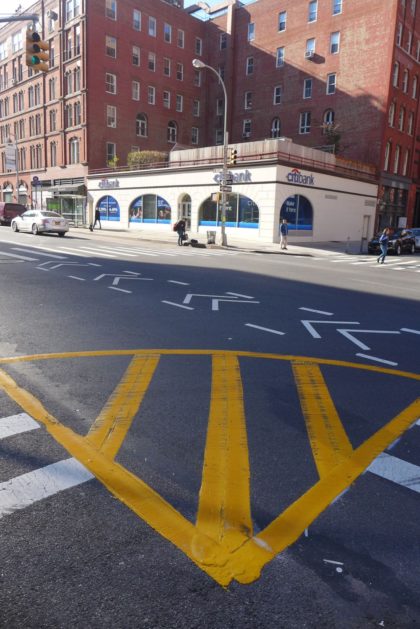
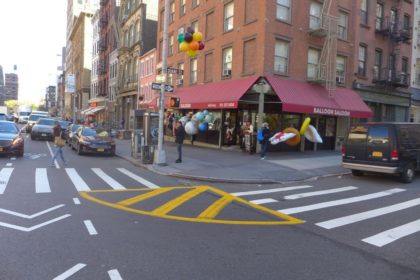 ••• A notice on the menu says that Augustine, the French restaurant at the Beekman hotel, will start serving lunch on November 29.
••• A notice on the menu says that Augustine, the French restaurant at the Beekman hotel, will start serving lunch on November 29.
••• Anthropologie put up signage to remind us all it’s opening at 195 Broadway (where Nobu will also be).
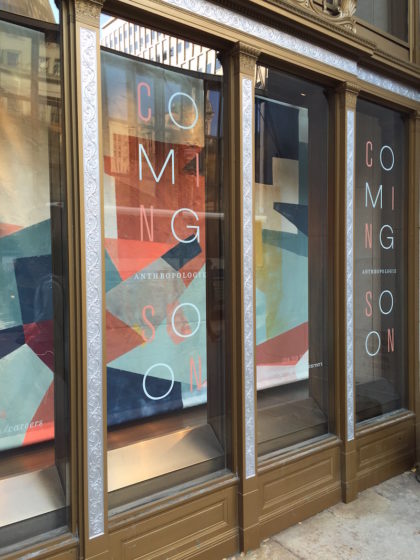 ••• Are buses allowed to drive wherever they want, or are they restricted to certain streets? It occurred to me as I watched this big Academy bus attempt to make the left from Greenwich onto Duane.
••• Are buses allowed to drive wherever they want, or are they restricted to certain streets? It occurred to me as I watched this big Academy bus attempt to make the left from Greenwich onto Duane.
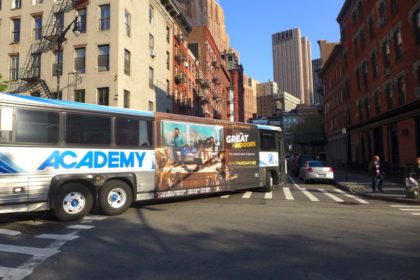 ••• Architecture firm MNDPC tweeted a photo of the inside of Tetsu, the long-gestating restaurant at 78 Leonard.
••• Architecture firm MNDPC tweeted a photo of the inside of Tetsu, the long-gestating restaurant at 78 Leonard.
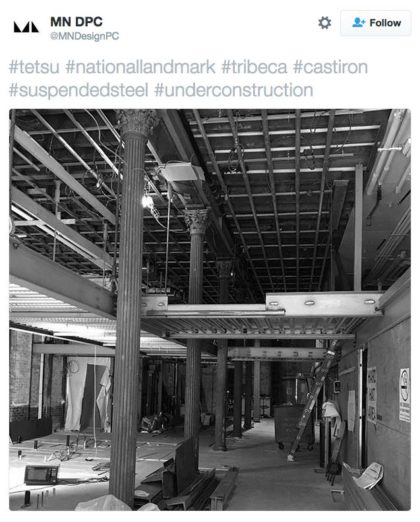 ••• A ghost sign has started to appear on the north side of 315 Broadway, above the fugly McDonald’s. I don’t think it was visible at all before. (Click on the photo to see it better.)
••• A ghost sign has started to appear on the north side of 315 Broadway, above the fugly McDonald’s. I don’t think it was visible at all before. (Click on the photo to see it better.)
10 Comments
Comment:
Subscribe
Subscribe to the TC Newsletter





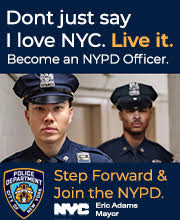


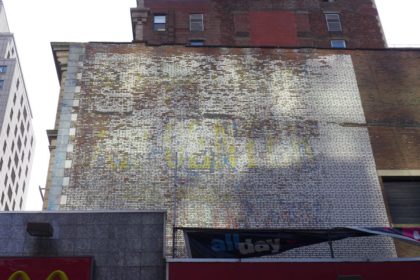






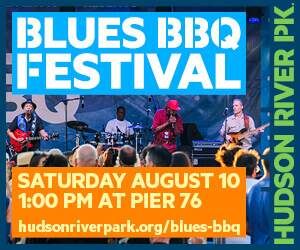
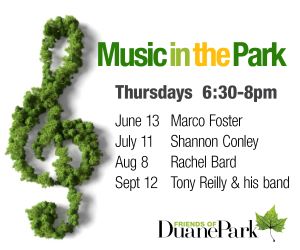
That wedge is probably in conjunction with the bike lane shown just west of it, to prevent sharp left turns by drivers and thus protect bikers from harm.
I suppose it’s obvious that the wedge is to discourage drivers from cutting the corner, but they still have to cross the bike lane. So why that corner and no other ones? (I added another photo, from the other side.) At some point, the markings become a distraction of their own.
From http://www.nyc.gov/html/dot/html/pr2016/pr16-077.shtml
“The DOT study released today, ‘Don’t Cut Corners,’ includes data that show left turns are responsible for three times more severe injuries and fatalities than right turns – and that in 2014, they constituted almost 30% of all pedestrian and bicyclist injuries in New York City. The median age of pedestrians killed in left-turn crashes is age 67, significantly higher than the median age of 50 for other crashes. Through a detailed, manual review of crash data, DOT also discovered that left-turn injuries and fatalities were concentrated at intersections where vehicles were moving from a minor (usually narrower and one-way) street and turning into a major (usually wider two-way) street.
“The study was required by Local Law 21 of 2014, among a package of Vision Zero bills passed by the City Council and signed by the Mayor. […]
“In addition to continuing to roll out effective safety treatments, the City is also undertaking a 100-intersection pilot initiative to test new safer left-turn designs. All 100 pilot sites are expected to be completed by the end of the summer, and will be evaluated to determine their effect on slowing vehicle turns and improving safety. If successful, the piloted intersection treatments will be expanded to additional sites across the City.”
It is part of a “guiding radius” or “slow turn wedge,” apparently.
From page 56 of “Don’t Cut Corners” presentation:
Left Turn Traffic Calming Pilot: DOT is undertaking a 100-intersection pilot initiative to test new safer, slower left-turn designs. Treatments will include the marking of a guiding radius […]
LEFT TURN TRAFFIC CALMING PILOT
Enhanced Daylighting / Slow Turn Wedge
(part of 100 location pilot program, currently being
implemented and evaluated through 2016)
• One-way to one-way treatment
• Utilizes markings and plastic delineators
• Clears parking 10’ from the crosswalk [when DOT paints similar yellow markings in the left parking lane before the crosswalk, not shown in the photos posted]
Benefits:
• Guiding radius tightens and calms left turn
• Increases visibility of pedestrians in the crosswalk for motorists, providing more stopping time
• Mitigates visibility issues caused by vehicle’s A-pillar
• Modifies turning angle from cross street onto receiving roadway to create safer, slower left turns with no change in traffic capacity
[http://www.nyc.gov/html/dot/downloads/pdf/left-turn-pedestrian-and-bicycle-crash-study.pdf]
Thanks, James.
But this particular left turn is the same as a right turn, since both streets are one-way. So is it necessary here?
Fran: This installation is noted specifically in the linked presentation as a “One-way to one-way treatment.”
” In the study group, intersection directionality was a
significant factor with 30% of left turn pedestrian and
bicyclist injury crashes occurring at intersections that
consist of a one-way to one-way configuration
• In contrast, only 13% of intersections citywide
are one-way to one-way”
Further, visibility issues mean that left turns are more dangerous than rights, even without crossing a 2-way street:
“The vehicle’s A-pillar (the portion of the vehicle frame between the windshield and the driver’s side window) obscures seven linear feet of the driver’s view of pedestrians in the crosswalk. This blind spot can track with crossing pedestrians, dramatically obscuring the driver’s view as compared to right turns, if the driver fails to appropriately move their head and scan the crosswalk.”
Instead of some amateurishly painted yellow lines, they should install a raised curb with some spikes or blades. That’ll get the effect we’d want.
According to the 1975 book “No Left Turns,” by a former FBI agent named Joseph L. Schott, J. Edgar Hoover banned his chauffeur from making left turns after an accident when he was being driven.
http://www.washingtonpost.com/wp-dyn/articles/A7055-2004Jun25.html
UPS famously creates delivery routes that minimize left turns (to save gas).